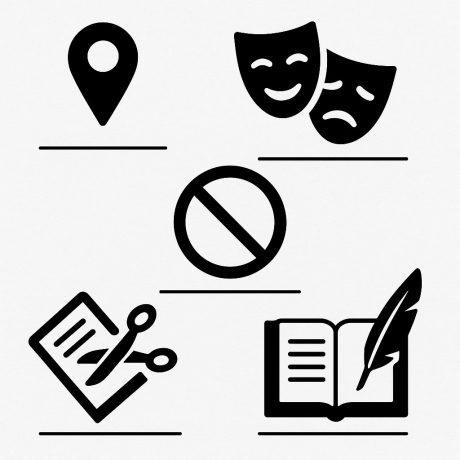
“We are all migrants.” That was the opening statement of a deeply moving Community Day held on Saturday 12 July, 2025, at Goldsmiths, University of London: the launch event for the Migration Stories project, led by Professor Bulent Gokay (Keele University), Susan Moffat (Director, New Vic Borderlines) and Professor Farzana Shain (Goldsmiths) and funded and co-hosted by the Migrant Futures Institute and the inspiring Borderlines team from the New Vic Theatre.
The afternoon workshop (1–4pm, Richard Hoggart Building) was open to all ages and led by Aida, Rachel, and Rory, who guided us through a carefully structured, creative journey. Using drama, movement, collage, and discussion, we explored migration as both a personal experience and a global reality.
1. Our Names Are Gateways to Our Stories
We began with a simple but powerful name game, drawn from drama traditions, which quickly led to rich conversations. People from Bosnia, Turkey, Bulgaria, Ireland, and other places reflected on what their names meant to their families, their cultures, and themselves. The act of saying one’s name, and being heard, set the tone for a workshop grounded in respect, curiosity, and shared humanity.
2. Drama Made Displacement Real
In one particularly memorable activity, a well-established drama game, People, Shelter, Storm, named Child, Shelter Storm for the purposes of this workshop, we worked in groups to create physical “shelters” protecting an imaginary child from a dramatic “storm”. The game embodied what it means to lose a home or become uprooted, and raised difficult questions about responsibility, protection, and vulnerability. It was emotionally charged and deeply engaging, encouraging us to feel our way into complex migration narratives.
3. Exclusion Was Felt, Not Just Discussed
We played a version of the chair game, in which one person tries to reach an empty chair while others must shift to block them by creating a new empty seat elsewhere. This fast-paced activity — seemingly simple — became a striking metaphor for exclusion and blocked movement. After the game, we had a rich conversation about who gets access, who gets turned away, and how rules can be manipulated or enforced in unjust ways.
4. Art Helped Us Reflect and Rebuild
A key part of the workshop involved collage-making, using cut-up text, images, and drawings to create personal responses to the themes of home and migration. This slower, hands-on creative process offered space to pause and reflect. We explored what “home” means to us visually and symbolically, from childhood memories to cultural artefacts to abstract feelings of safety or loss. The collaging was deeply expressive, revealing how art can hold layered experiences and bridge differences.
5. A Poem Brought Everything Together
The final activity of the workshop was a collective reading and dramatic interpretation of a poem ‘The Day the War Came’ by Nicola Davies.
It told the story of a child whose school is destroyed by the war, from which she flees only to find that she is rejected by another school for being an outsider and refugee. We performed the poem together, embodying its rhythms and characters. It was a poignant end to the session, bringing together the day’s themes — loss, resilience, exclusion, hope — in a creative act of shared expression.
Reflections
This was not just a workshop: it was a journey. Through theatre games, group discussion, visual art, and performance, we explored the deep emotional and political terrain of migration in an embodied, collaborative, and humane way.
The Migration Stories project recognises that “although our lives and jobs might differ, we all have migration experiences, whether from our own journeys or those of our families”. This creative and collaborative workshop reminded me that those stories are not just historical or political: they are living, emotional, and present.
With sensitive facilitation from Aida, Rachel, and Rory, the workshop gave voice to our personal experiences while connecting them to broader histories and systems. It offered an urgent reminder: migration isn’t just an issue: it’s a lived reality, shaped by family, memory, and imagination.
To find out more, subscribe to the mailing list for the ‘Migration Stories’ project, visit the Goldsmiths calendar listing, explore the Migrant Futures Institute, and learn about the Borderlines programme at the New Vic Theatre.
Later that evening, a separate audience gathered in the George Wood Theatre for the performance of Londoner (ages 16+), a one-woman show telling Fatma’s migration journey from a Kurdish village in Turkey to Cyprus and eventually London: a moving testimony to the ordinary and extraordinary aspects of migration.
To learn more or register for future events, please fill in this form here: https://forms.office.com/e/4CtZdN7ZSA
